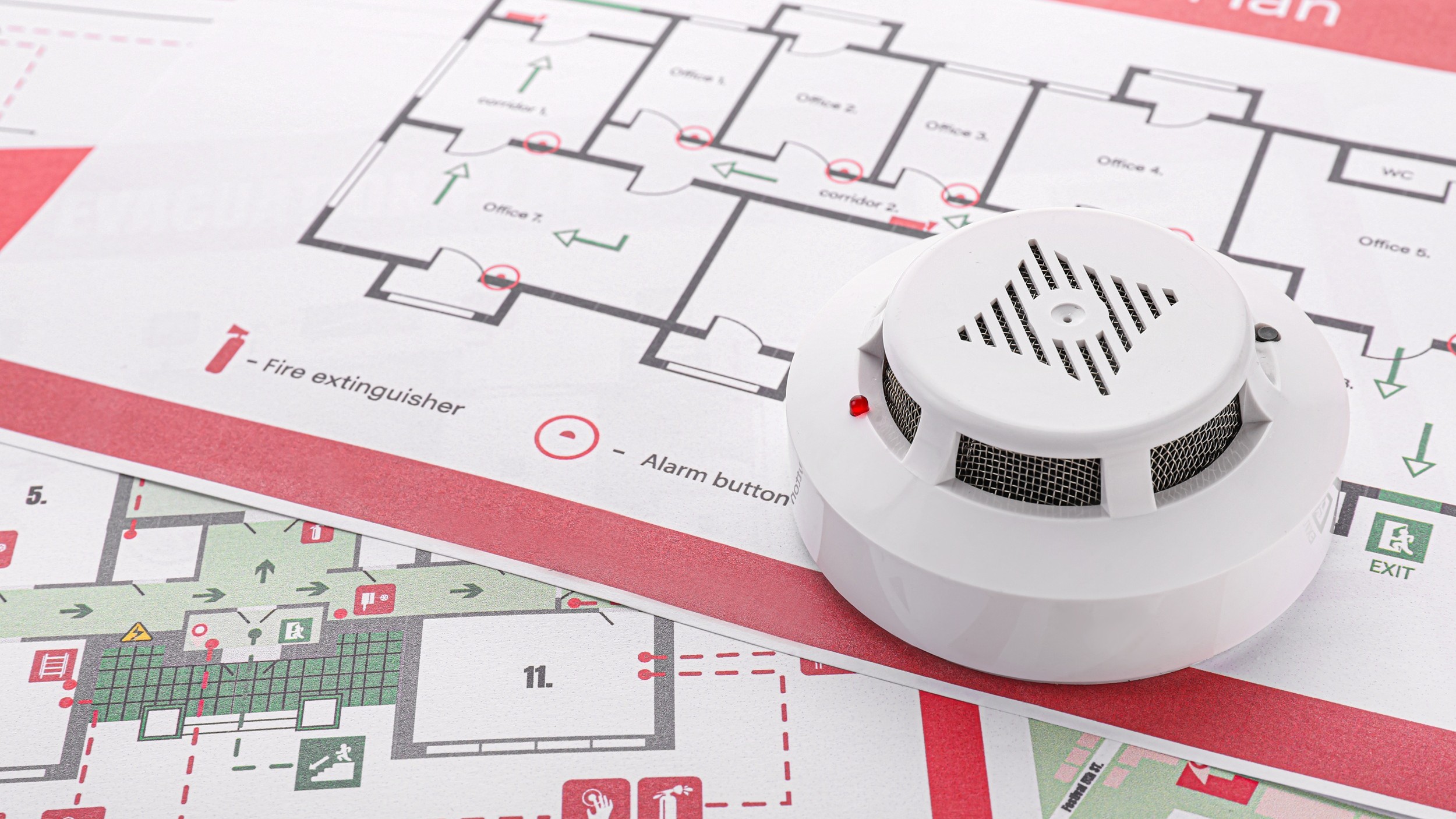
To reflect its importance in the built environment, Fire safety is a core competency on the APC for all building surveying candidates.
In the RICS pathway guide for Building Surveying, the competency is defined as 'the skills to assess the level of fire safety in buildings, and in proposed building projects, and being able to advise how to achieve required levels of safety when they are not present'. Building surveyors can take this competency up to level 2, so this is the highest level that this article will focus on.
The respective competency requirements at each level are as follows.
- At level 1, you should demonstrate your knowledge and understanding of the impact of a fire on a building, including how fire may be affected by enclosure and how this can be controlled. To do so, you need a good understanding of basic fire safety principles, including minimising the risk of fire in terms of personal injury, death, physical damage and environmental impact.
- At level 2, you need to apply your knowledge of the combustion process, the physics and chemistry of fire, as well as its physiological and psychological effects in professional scenarios. You also need to demonstrate your experience of assessing means of escape and fire safety management systems.
Statute and systems must be understood at level 1
At level 1, all building surveyors should be aware of key areas of knowledge, including the relevant legislation and regulations. You need to know about:
- the Building Regulations 2010 and Fire safety: Approved Document B
- the Regulatory Reform (Fire Safety) Order 2005
- the Fire Safety Act 2021
- the Fire Safety (England) Regulations 2022
- section 156 of the Building Safety Act 2022
- the Grenfell Tower fire and its impact on the surveying profession and construction industry
- external wall systems (EWSs) and cladding, and EWS1 forms
- passive fire safety, including compartmentation, fire doors and fire ratings
- fire risk assessments
- RICS guidance on fire safety
- RICS fire safety homeowners/occupiers and residents guide
- RICS fire safety for landlords – rented and shared accommodation
- International Fire Safety Standards (IFSS): Common principles
- RICS fire safety exclusions and professional indemnity insurance (PII) requirements
- common causes of fire
- the three components needed to start and sustain a fire, the so-called fire triangle
- fire escape routes and evacuation procedures
- personal emergency evacuation plans (PEEPs)
- other related compliance issues, such as electrical safety, gas safety, carbon monoxide and furniture compliance
- active fire systems to protect buildings and occupiers, such as detection, alarms and suppression
- protection of structures
- how fire can spread and be contained by the structure and layout of a building.
Experience and insight help attain higher levels
At level 2, you need to demonstrate that you can use the knowledge you have acquired at level 1. As such, you could include some of the following typical examples in your case study or summary of experience:
- assessing project plans for fire safety compliance
- inspecting projects to assess fire safety features
- producing a fire safety audit
- applying fire safety engineering to a building's design specification
- complying with recommendations from a fire safety audit or risk assessment.
Draw on your work to inform interview response
You should be familiar with the building surveyor's role and responsibilities relating to fire safety for a variety of projects, including the key legislation and RICS guidance that apply, along with a general understanding of fire and buildings. Your summary of experience will need to convey this, with a clear statement of your knowledge at level 1.
If you are taking this competency to a higher level, you will need two to three practical examples at level 2. These need to be written in the past tense and the first person.
Elements of this competency can also be included in your case study, and you can cover any relevant knowledge you have acquired in your CPD record as well.
You will need to be ready to address questions on your examples and knowledge in your final assessment interview as well. Actual questions for final assessment will be based on your experience, and focus specifically on the examples that you have put forward.
If you are taking this competency at level 1 only, you will still need to show a robust understanding of the key areas of knowledge detailed above.
A sample level 1 answer and follow-on question are given below, which you can adapt to your specific circumstances. Remember you will need to ensure that your answer reflects your experience and demonstrates that you have given reasoned advice. Think logically about the measures you took, and the rationale for what you advised.
Q: Tell me about the role of fire doors in preventing the spread of fire in buildings.
A: Fire doors can be rated as FD30, offering 30 minutes of protection, or FD60, which give 60 minutes, with the higher rating preventing the spread of fire for a longer period. The rating required will be determined by the fire risk assessment – and Fire Safety: Approved Document B for new buildings – primarily relating to the location of the fire door and the use and layout of the building, as well as other relevant risks.
The purpose of the fire rating is to prevent the spread of fire for a sufficient time to allow the occupants to evacuate the building safely. This could include reference to fire-rated fire doors and fire-resisting door sets when writing specifications.
A door set includes the fire door with intumescent strips and cold smoke seals, door frame, fire-rated hinges, and a fire-rated door closer. These are all necessary to achieve compliance with the relevant rating in the event of a fire.
Q: What does an 's' after FD30 or FD60 indicate?
A: The 's' means that the fire door can stop the spread of smoke, as well as fire. This will typically be achieved by using smoke brushes and intumescent strips, the latter of which expand on being heated and seal the gap around the door frame.
Jen Lemen FRICS is a co-founder and partner at Property Elite
Contact Jen: Email
Related competencies include: Design and specification, Fire safety, Inspection
RICS Fire Safety Conference
15-16 October | 08:30 – 13:20 BST | Online
The fire safety landscape across the UK and Ireland is changing rapidly. With the Building Safety Act 2022 in force and the government’s acceptance of all the Grenfell Inquiry phase 2 report recommendations, built environment professionals must now meet stricter legal duties, deliver higher standards of safety, and manage more complex risks throughout a building's lifecycle.
The conference will help you to find out what the fire safety reforms mean for you and your projects. You will hear directly from regulators, practitioners, and policy leaders tackling the challenges of compliance, competence, and collaboration, and understand how national frameworks and the Building Safety Act 2022 impact your daily responsibilities.


